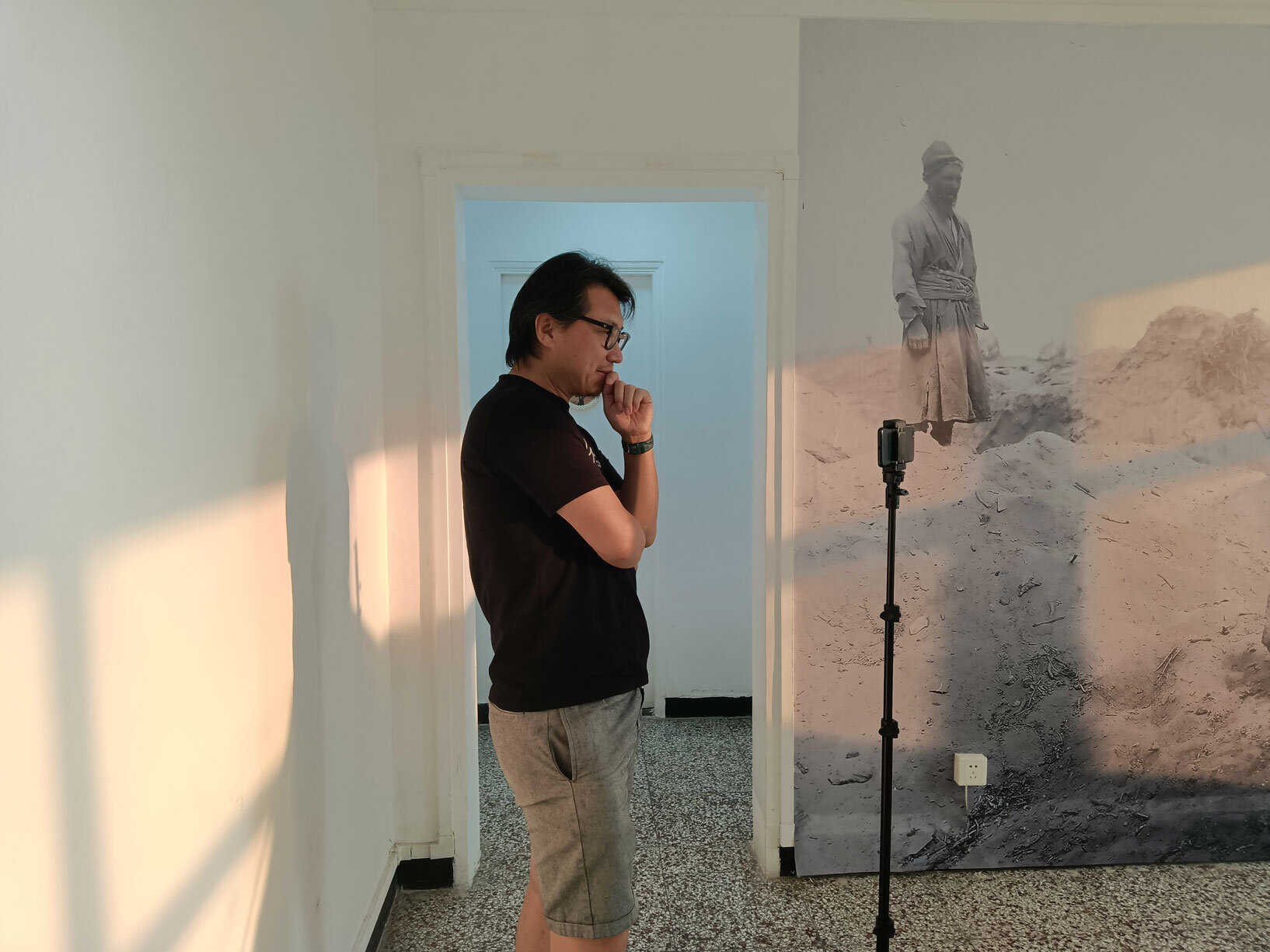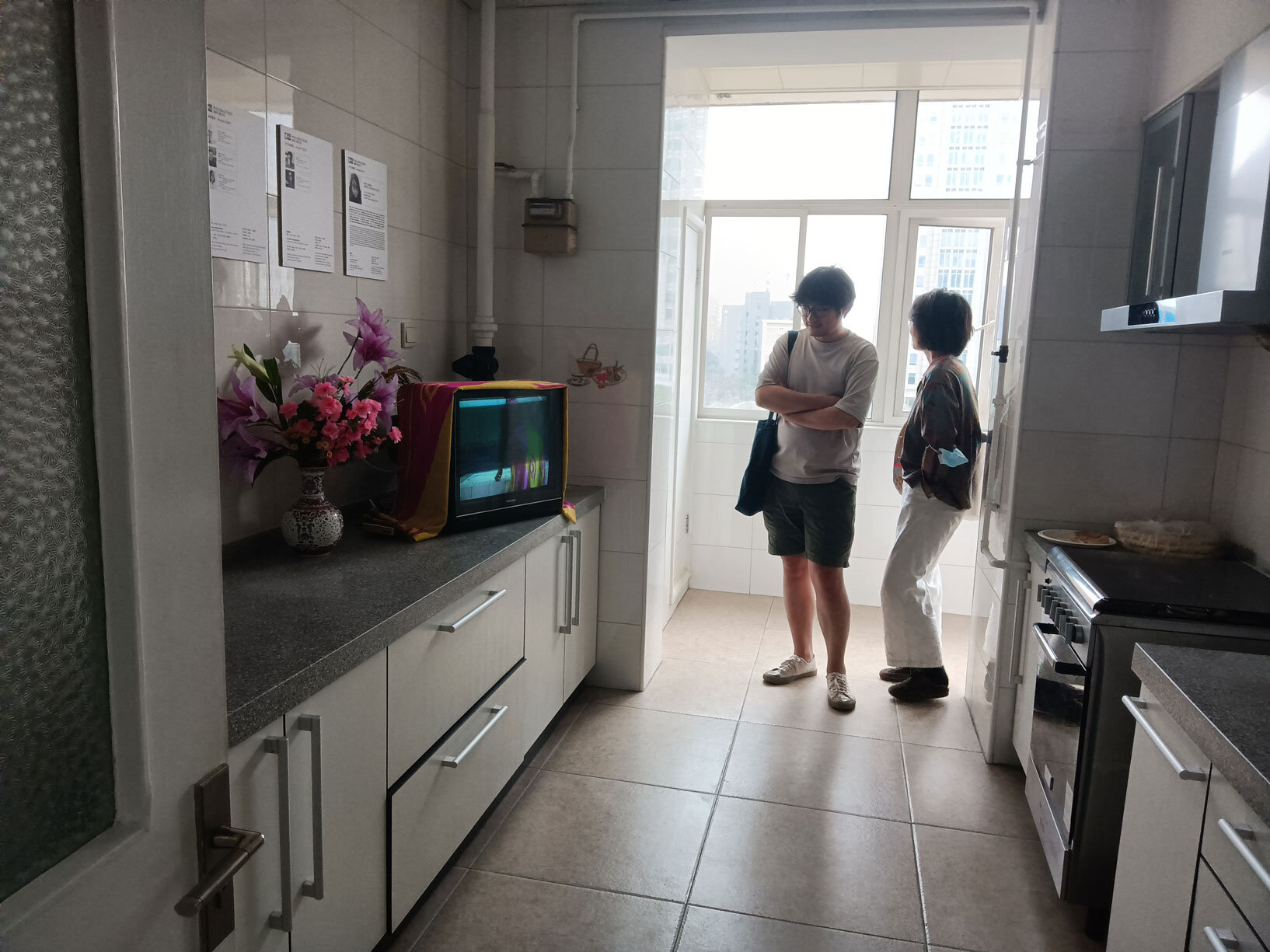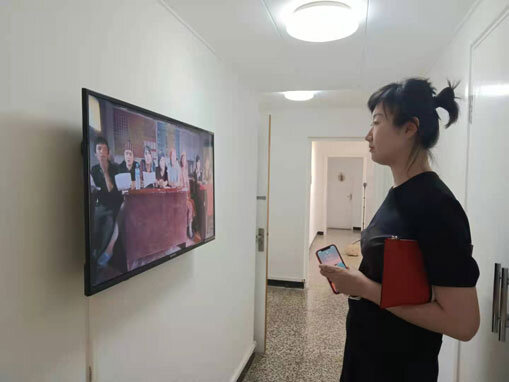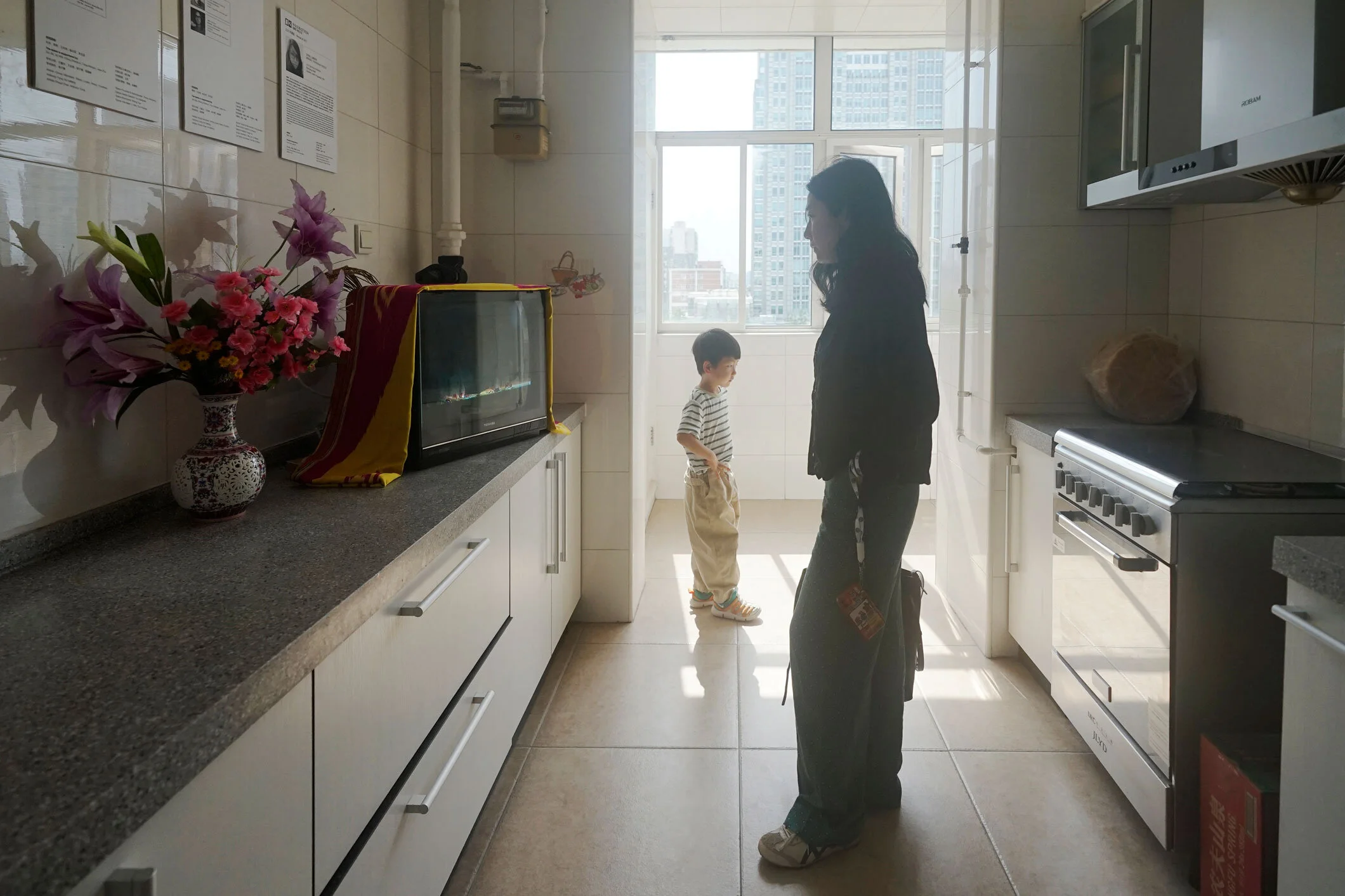On June 8, 2021, Liu Yujia's solo project Bianjiang Hotel (Border Hotel) opened at DRC No. 12.
Liu Yujia's exhibition takes the landscape and archaeological excavations as the background and confronts the historical imagination of China’s frontier territories in the space of DRC No. 12 with two temporal threads. One is the archaeological excavations of the Hungarian-British archaeologist Sir Aurel Stein in China’s frontier region in the late 19th and early 20th centuries and the ethnographic mapping through anthropological techniques for the production of oriental knowledge. The other is the transformation of the landscape in the context of folklore and history and the mining and trade of jade in the new Chinese frontier during the economic wave of "mass enrichment" from the end of the 20th century to the present.
The southernmost room in DRC No. 12 is partly arranged to look like the small parlor of the British Consul General George Macartney’s residence in Kashgar in the early 20th century, with an ethnic-style tablecloth on the coffee table between two chairs. Above the chairs is a video diptych narrating the relationship between changing landscapes and human activities. On the floor is a ready-made mineral-dyed Hotanian cashmere rug from the 1990s; the pattern of the rug hints at the book Great Tang Records on the Western Regions, which profoundly influenced Stein's archaeological career.
On the south wall of the living room in DRC No. 12 is a full-wall photograph of the excavation site taken by Stein during his archaeological excavations in the Damagou area of Hotan, and installed near the western windows is a reenactment of the historical tent in the garden of the residence of George Macartney, the British Consul in Kashgar. On the east wall opposite the tent is a small photograph of the Kunlun Mountains taken from inside a tent during one of Stein's mountain surveys in the region. On a small table at the entrance of the tent are replicas of stationery such as maps and magnifying glasses used by Stein, as well as manuscripts and archaeological photographs taken by Stein.
Outside the tent in the living room are four smartphone-broadcast stands with Huawei smartphones and iPads playing back images depicting the jade trading market in the frontier region, where traders live-stream jade trading through WeChat, TikTok and Kwai software.
A single-channel video work A Music Lesson - Song of Motherland in the corridor to the right of the entrance of DRC No. 12 shows the scene of teenagers from the frontier region chanting Song of Motherland in their own ethnic language.
On the wall of the room on the north side of DRC No. 12 is a single-channel video work, Archaeological Journal - Topographic Exploration of the Riverbed, showing scenes of the people of the frontier region digging and selling jade in the dry Yulongkashi Riverbed, guided by the dream of universal riches. Outside the western window, a monitor on the balcony shows images of an ethnic minority youth tidying up his face after working.
On the table in the room is a set of archival photographs of anthropometry that Stein took during his ethnographic surveys in the vast Kunlun Mountains in the early 20th century.
In the single-channel video work The Pale View of hills, images of the daily labor of the Kucha Patriotic Prince’s widow alternate in sound and video in the bathroom and kitchen.
The princess title was a status symbol in the old era, which is preserved today because of the need for unification work. Today, the princess, as a worker in the cultural tourism industry, becomes a physical laborer of the new era. The use of the marginal space in DRC No. 12 intertwines the old and new timelines attached to the princess.
By shifting the perspective between the long, medium and short durations of history in the Braudelian sense, the artist attempts to observe, reflect and define the concept of "frontier" in the double scene of history and today.
As a title, Bianjiang Hotel is both a metaphor for the Diplomatic Residence Compound as a short-term stopover “border space” and the locus where the symbolically congruent sites of the frontier and Border Hotel are juxtaposed and compared.
2021年6月8号刘雨佳个人项目《边疆宾馆》在外交公寓12号开展。
刘雨佳此次展览以风景地貌、考古发掘为背景,将两条时间线索串连起来的中国边疆的历史想象并峙在外交公寓12号空间:一条线索是19世纪末20世纪初匈裔英国考古学家奥莱尔·斯坦因在中国边疆地区的考古发掘,以及以知识与学术获取为由,以东方学、人类学为手段的人种测量等殖民主义的规训;一条是20世纪末到当下,新中国的边疆在“全面致富”的经济浪潮中玉石的开采、贸易和以民俗、历史为背景的风景变迁。
12号空间最南侧的房间被部分布置成了20世纪初英国驻喀什葛尔总领事马继业官邸的小会客厅的样貌,两把椅子之间的茶几上铺着民族风格的台布,椅子和茶几对面墙上是一件双屏影像作品,影像关于斯坦因在20世纪初期三次在中国边疆地区的考古经历,它也展示着边疆地貌的变迁与人类活动的关系。地上铺着一件现成品——一件90年矿物染色的和田羊绒地毯,地毯图案提示着深刻影响斯坦因考古生涯的《大唐西域记》。
12号空间客厅里的南面墙上是一幅满墙的摄影,是斯坦因在和田达玛沟地区考古发掘时拍摄的发掘现场,靠西面飘窗,复原了斯坦因当年支在英国驻喀什葛尔领事马继业官邸花园里的一顶帐篷。帐篷对面的东墙上是一张小幅摄影,是斯坦因在昆仑山地区进行山体测量时,从帐篷内的视角拍摄的昆仑山风景。帐篷口的小桌子上摆放着斯坦因用过的地图、放大镜等文具的复制品以及斯坦因拍摄的考古照片以及手稿。
客厅的帐篷外面是四个手机直播架,架上的国产华为手机、iPad里面播放着在边疆地区的玉石交易市场,人们通过微信、抖音与快手等视频直播软件进行玉石直播交易的情景。
12号空间进门右侧的走廊里的一件单屏影像播放着边疆少年用自己的民族语言齐声高唱《歌唱祖国》的场景。
空间北侧的房间东墙上是一件单屏影像,播放着在全民暴富的梦想的指引下,边疆人民在干枯的玉龙喀什河河床挖玉、卖玉的场景。透过西面通向阳台的窗户,一位少数民族青年在劳动之余整理面容的影像面向房间内播放。
房间桌上摆放着一组档案——斯坦因在20世纪初在中国边疆地区与广大的昆仑山脉进行人种测量的档案照片。
通过三个单屏影像和一个声音播放,库车爱国王的遗孀的日常劳作形象以声音和影像的方式在卫生间和厨房里交替出现。
王妃头衔是旧时代身份的象征,在今天因为统战工作的需要被保留了下来。但王妃作为一个文旅事业的工作者,又是一名身体力行的新时代的劳动者。王妃在厨房、卫生间的劳作成了她作为劳动者而非王妃身份的最好体现。12号空间中非主要展陈空间的使用,将附着在王妃身上的新旧两条时间线索交织在了一起。
艺术家试图通过在布罗代尔的历史长、中、短三个时段之间变换视角,在历史和今天双重场景里观察、思考、定义“边疆”的概念。
边疆宾馆既是对外交公寓这一短期驻足的边缘地带的隐喻,也是将边疆和宾馆两个不同体量的场域进行比较的载体。
WORKS
OPENING SCENE























































































































